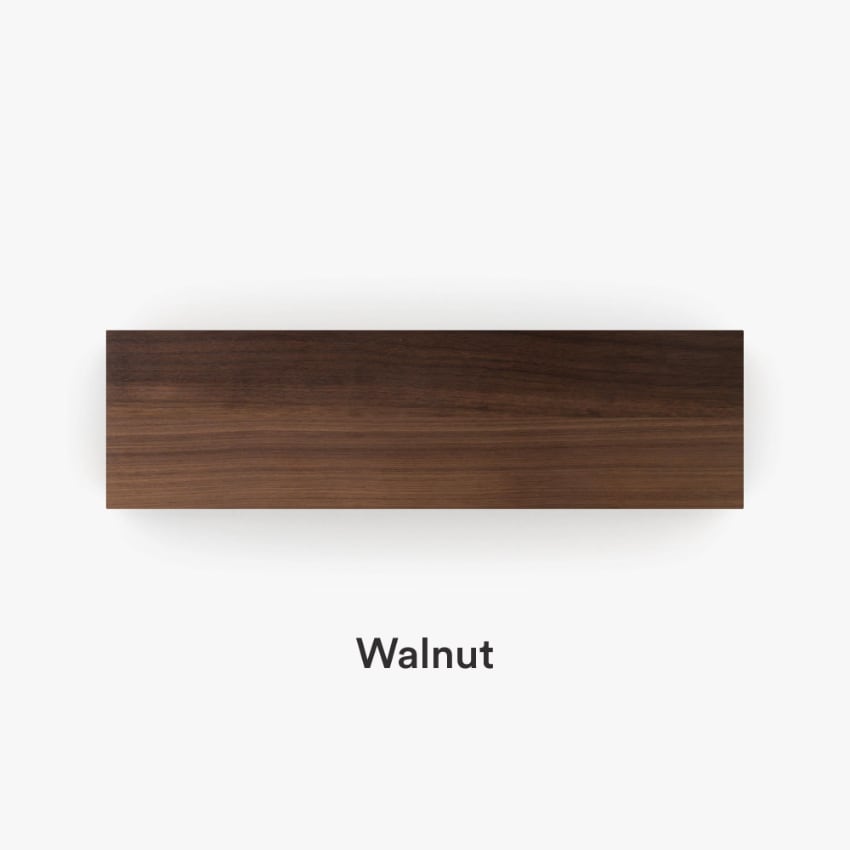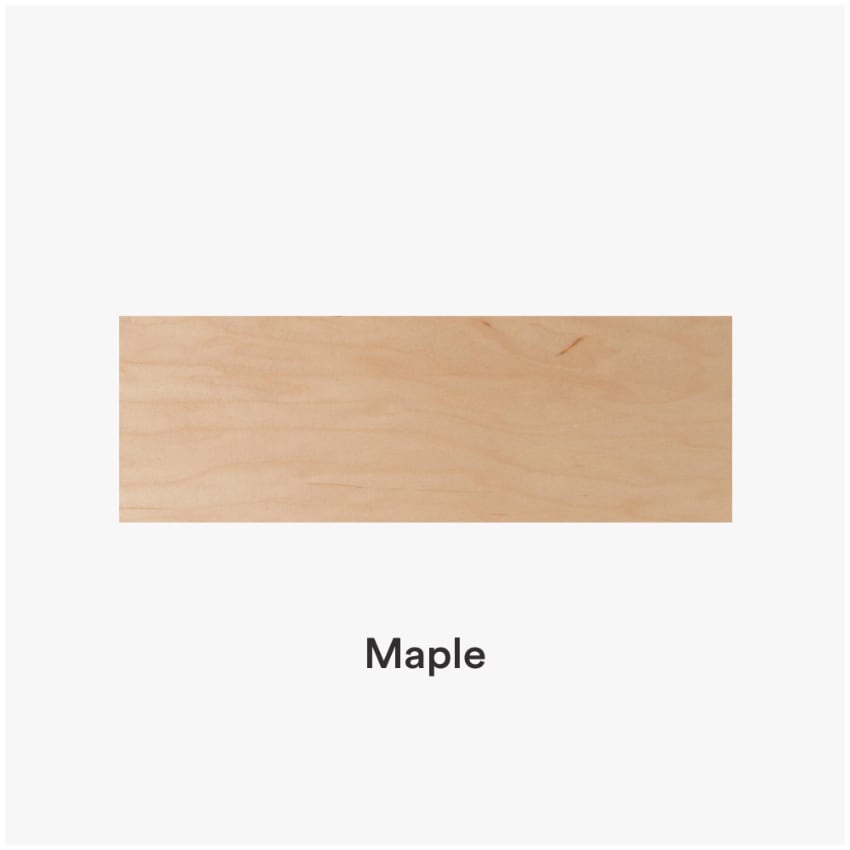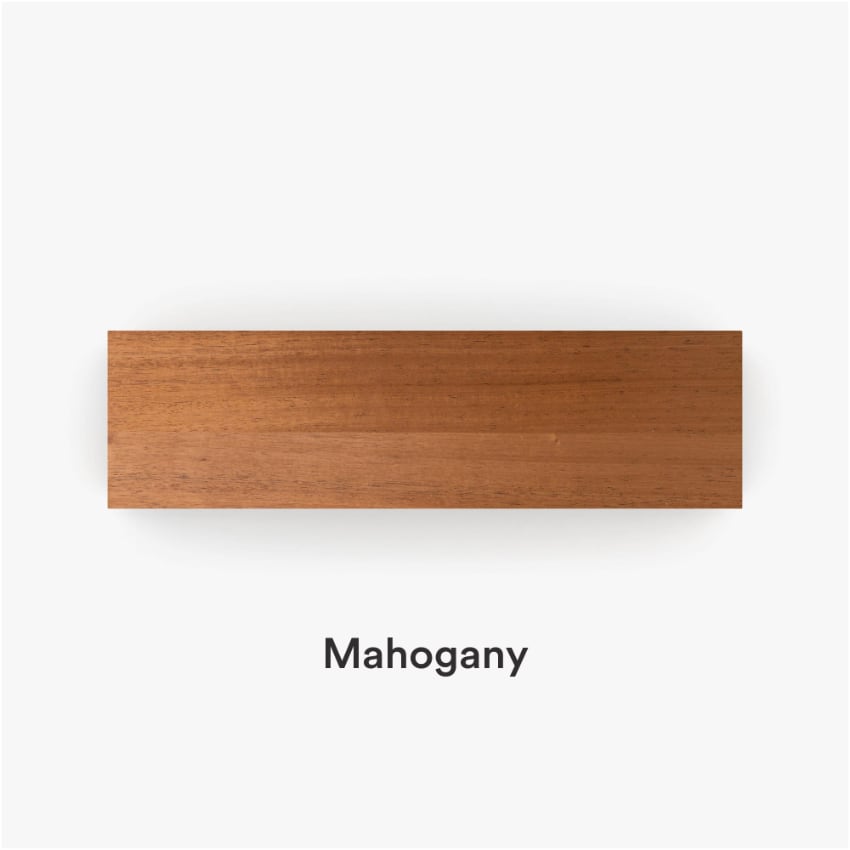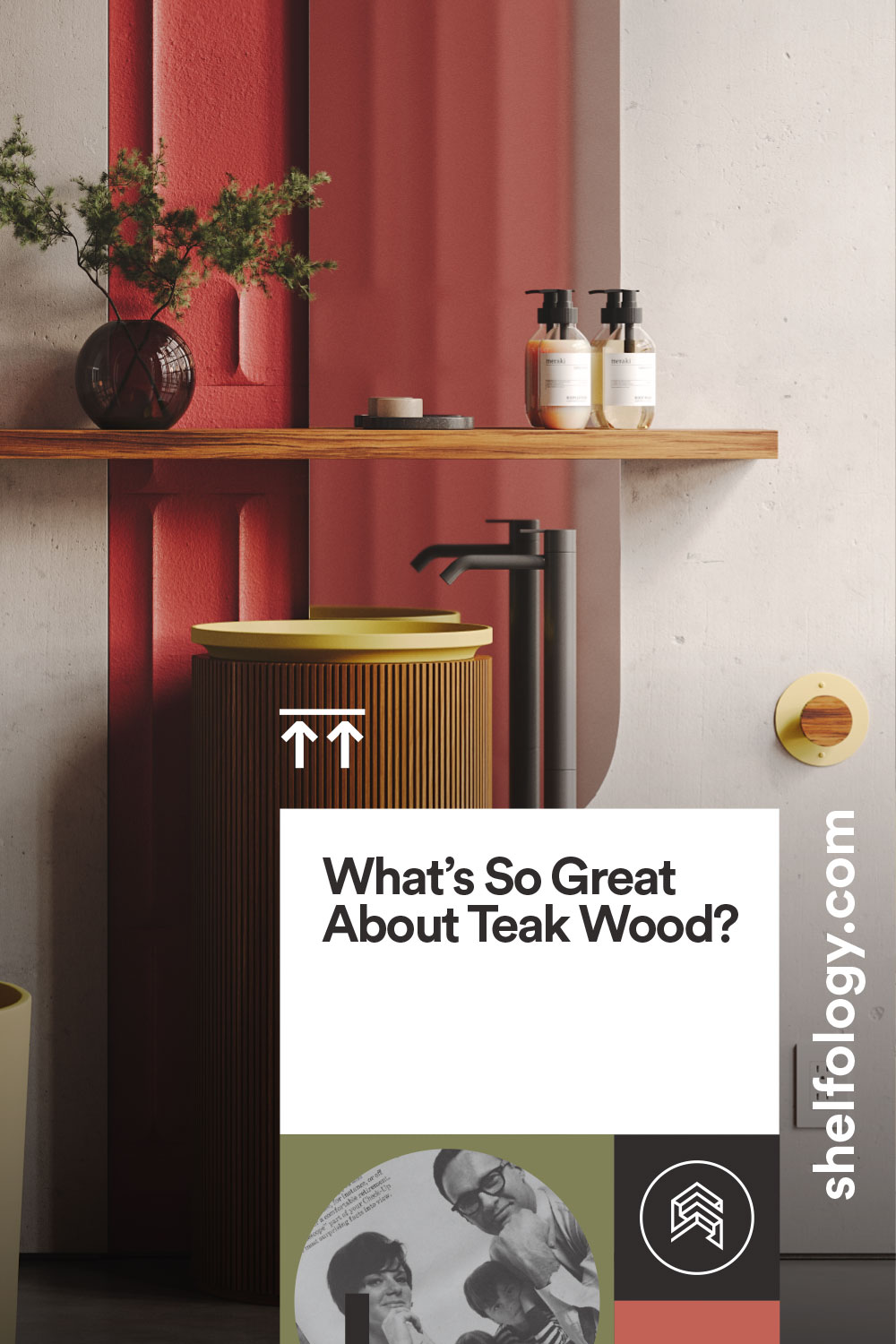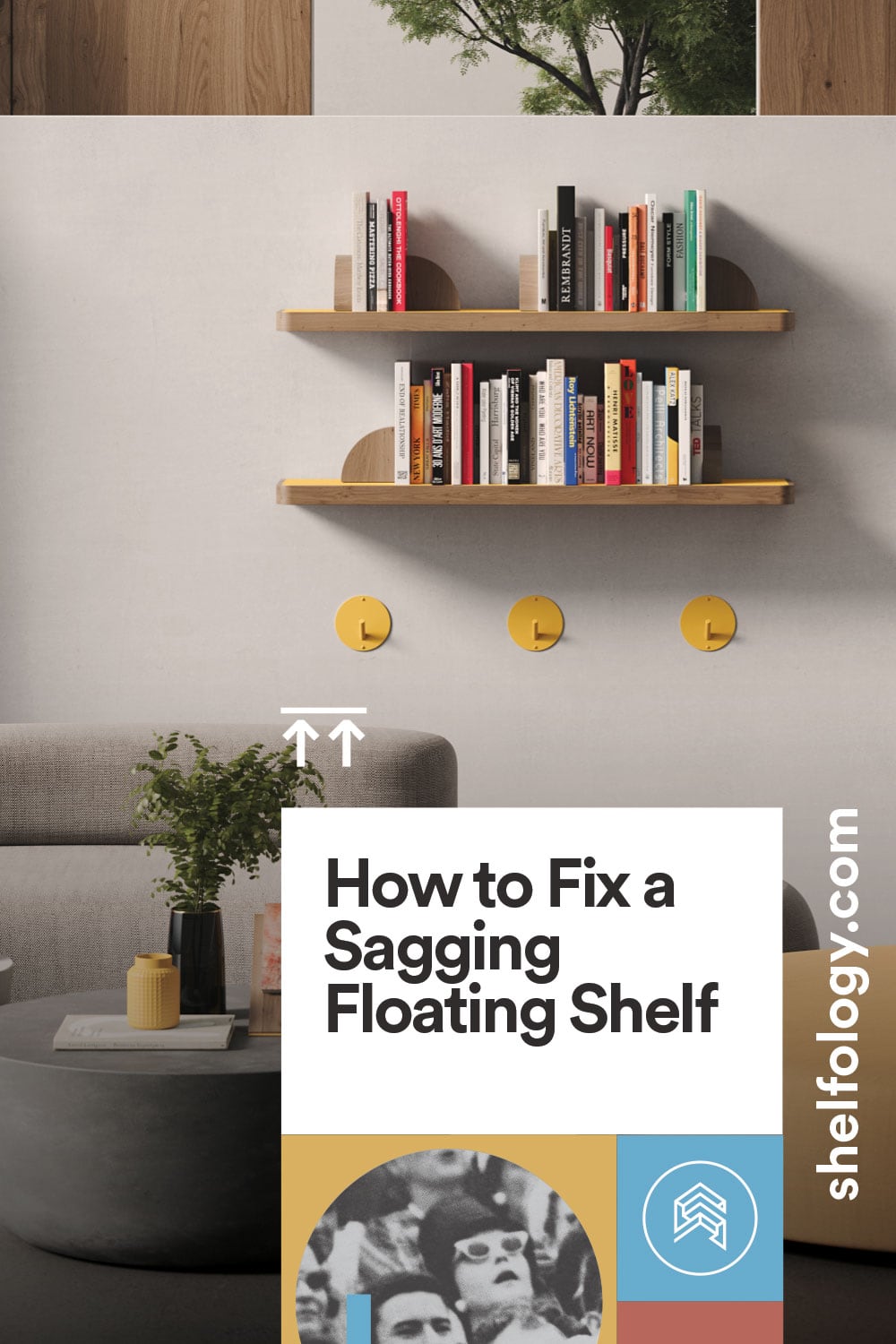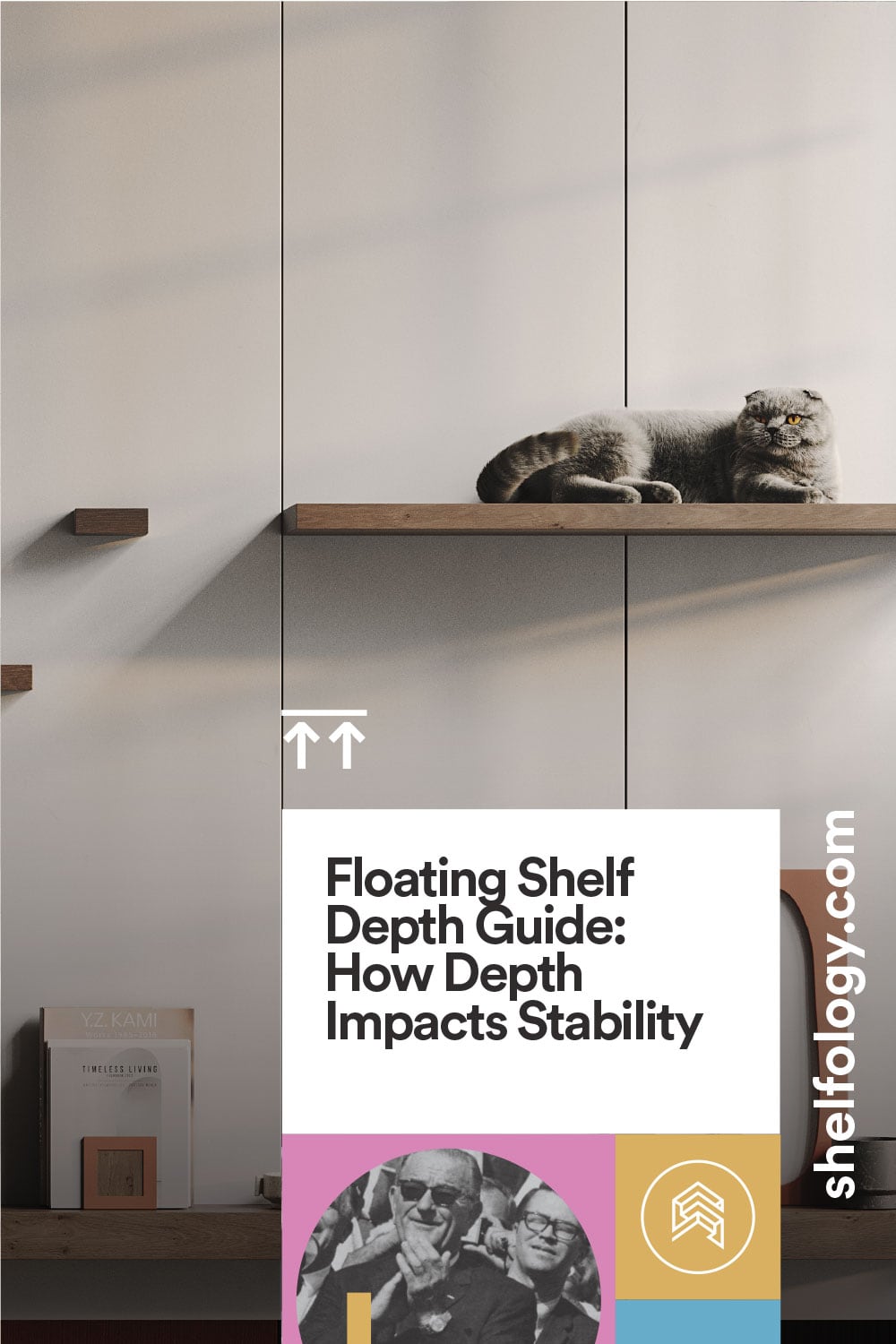When most folks start thinking about installing floating shelves, they typically focus on strong and reliable floating shelf hardware... and rightfully so. After all, underwhelming floating shelf brackets are the typical points of failure for a lame shelf install. However, one crucial aspect that often doesn't get enough attention is the type of wood used: the type of wood that you choose for your floating shelf project can make a huge impact on the longevity of the install AND on the overall aesthetic. So... wondering which are the best woods for a lifelong floating shelf install? Let's talk WOOD!

TLDR: The best wood types for floating shelves are solid, sustainable hardwoods that will resist warping or bowing. For modern decor, Alder, Walnut, Cherry, and White Oak are popular options. For a more classic look, try Maple or Mahogany.
Why the Type of Wood You Use for Shelves Matters

Of course, not all woods are created equally. For example, pine is generally considered softwood, while maple is hardwood. When you’re building shelves that you want to last an eternity (like we do), you usually select hardwood for your shelf slab. Granted, your mounting hardware bears the brunt of the load. And since our shelf brackets are some of the gnarliest, most heavy-duty shelf hardware on planet earth… we could probably get away with softwood for our shelves. But we like to play it extra safe. After all, you rely on our products to stand up to whatever crazy, radical things you put on them!
So, we’re proud to say that we only offer furniture-grade solid hardwood shelves. This isn't to say that you can’t throw a custom-made pine shelf onto our contractor-grade floating shelf brackets… because you totally could! We just don’t want there to be any question whatsoever that our clients can rely on our pre-built shelving. You dig?
Which Materials Should You Avoid Using for Shelves?
Growing up, my mom purchased many the cheap-o bookshelf or TV entertainment center. These inexpensive pieces of “furniture” (it hurts me to even call them that!), while cost-effective, leave much to be desired in the way of durability. One twist of the screwdriver too many… or one misstep when trying to move it from place to place and that puppy is probably gonna fall apart. These inexpensive products are typically built using particleboard, MDF (micro-density fiberboard), or plywood. These materials are called “wood composite products”: particleboard and MDF are made of squashed together wood shavings and plywood is made of glued-together wood veneer. Shelves made from any of these materials are GUARANTEED to sag, warp, snap, splinter, or straight up break over time and/or when any weight is applied. It really grinds my gears when someone writes in and tells us that our shelves “are so expensive”... or when they tell others “don’t buy shelves from Shelfology… you can get floating shelves on Etsy for $30!”. While these products are inexpensive, the age-old adage applies: you get what you pay for. So do yourself a favor: if you want your shelves to hold their weight and, more importantly, if you want your shelves to last… avoid these materials like the flu.
Now that THAT is out of the way… let’s talk JUICY HARDWOODS BABY!
The Best Wood for Shelves
Some woods, in addition to being gnarlier than others, are also inherently more awesome than others. Let’s take a look at some of the differences between the wood types we offer here at Shelfology:
Alder Wood: Long-Lasting and Earth Friendly
Alder trees are a cousin of birch trees and their wood looks similarly “whitish” when first cut. However, as the wood grain oxidizes (is exposed to air), it turns pale yellow and eventually to a deep reddish-brown. Alder wood isn’t the strongest hardwood, but it is bend and bow-resistant, takes to gluing and machining well, and it stains really beautifully and evenly. It features a rustic grain and gorgeous knots. Its natural characteristics make it a great choice for modern and rustic applications. This makes it a stellar option for carpentry applications like shelving, furniture, and cabinetry. It’s also worth mentioning that the abundant supply of Alder wood makes it a more sustainable, earth-friendly wood.
White Oak: A Crazy-Versatile Wood
One of several varieties of oak, the sapwood of white oak is a light, pinkish-yellow color. Its heartwood is far darker. White oak is an extremely hard hardwood, which makes it perfect for furniture, flooring, cabinetry, and shelving. White Oak is also naturally resistant to the elements and decay which makes it an excellent choice for kitchens, bathrooms, and outdoor applications. It stains beautifully and is full of character. It is a perfect choice for just about any space. There is a reason White Oak is consistently one of the most popular choices for our customers.
Walnut: Seriously Beautiful Wood
Walnut wood is seriously beautiful to look at. Walnut is another hardwood for which the sapwood is naturally light-colored. Walnut is generally steamed before supplying, which gives it that dark color most people are familiar with. This wood type takes glue really well, making it a great option for bonded pieces. Walnut is a gorgeous, dark-colored wood that will add a modern yet clean, natural look to any space. It is considered a medium hardwood, which means that it is easy to work with and can withstand regular use without worrying about common issues like dents, scratches, etc. Looking for a classy wood that will last a lifetime? Look no further than Walnut.
Maple: The Versatile Yet Dependable Choice
Like the other hardwoods, maple sapwood is brighter in color, with a reddish hue that darkens to a brownish-red towards the heartwood. Maple tends to dry slowly and changes in size pretty drastically as it does, but it dries into a very strong, heavy-duty material that we love making into raw shelving. Maple is also an ideal wood for long shelves as its even grain gives a uniform appearance across long surfaces. This smooth, uniform grain means that you can expect very predictable and consistent results when staining Maple. So if you are shopping for shelves and precise coloring is a factor, then Marvelously-Modern Maple would probably be a good choice for you. It’s super durable and resistant to warping… making it a perfect choice for kitchens and bathrooms.
Mahogany: Rich. Gorgeous. Seriously Sexy Wood
Second only to Teak, Mahogany is a beautiful, furniture-grade wood. Mahogany is a humid, warm weather tree with a durable, dark finish. This type of hardwood is especially beautiful and sought after because, since the trees grow to be so large, the grain of mahogany is very straight with minimal knots. Mahogany features a deep reddish-brown color and a beautiful natural pattern. Seriously… Mahogany is gorgeous. Mahogany is also famously durable. If you are looking for rot, warp (and kid!) resistant wood that will stand the test of time, look no further than Mahogany.
Selecting the Right Wood for Your Installation
The wood and finish you pick are up to you! Pick whatever tickles your fancy and goes with your decor. We’ve made the options simple for you at Shelfology; no matter which wood type you pick, you won’t be disappointed. Oh, and your nice, beautiful things won’t fall off the wall because the wrong type of wood was used to develop your shelf!
That’s a RADICAL win-win if you ask me! So what are you waiting for!? Check out our full line of gorgeous hardwood floating shelves and get customizing now!





